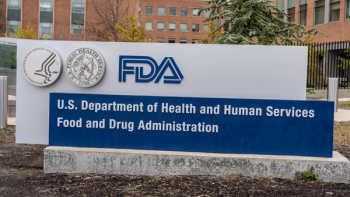
FDA: Steps Toward Quantitative Safety Assessment
A new collaboration will move FDA closer to predicting adverse events – before they happen – as part of the regulatory process
A new collaboration will move FDA closer to predicting adverse events – before they happen – as part of the regulatory process
Jeffrey Marrazzo
In an article published in Nature last June, FDA’s Darrell Abernethy, Lawrence Lesko and Janet Woodcock outlined the agency’s desire to incorporate “mechanism-based drug safety assessment and prediction” into the regulatory approval process. FDA’s collaboration with MolecularHealth, a bioinformatics company, is a meaningful step in that direction.
In the past, FDA has used observation and statistical analysis to detect side effects during clinical development – and the spontaneous cataloging of such events through FDA’s Adverse Event Reporting System (AERS) after a drug’s approval – but new technologies offer an increasingly sophisticated look at how a drug candidate, or combination of drugs, is processed by the human body.
On Valentine’s Day, FDA announced the collaboration with MolecularHealth, granting usage of the company’s Molecular Analysis of Side Effects, or MASE technology, which combines FDA’s AERS database with statistical observation as well as patient-level molecular data. (The company is also working with academic cancer centers and industry to promote evidence-based treatment decisions in oncology, as well as the identification of patients for clinical trials, based on leveraging traditional statistical models against genomic data.)
“In the last couple of years, the focus [at pharma companies] has shifted more toward the identification of safety issues, rather than simply the process and workflow required to notify regulators,” Jeffrey Marrazzo, chief business officer at MolecularHealth, tells PharmExec. “We’ve introduced MASE, a next generation, mechanism-based drug safety assessment and prediction tool, to meet this need”.
Identifying safety problems early allows pharma to halt development programs before they eat up resources. Sophisticated, mechanism-informed safety data from MASE also allows companies to “discuss with FDA why they think their product wasn’t the culprit” responsible for an AE, for example, says Marrazzo.
Marrazzo is keen to get MolecularHealth’s technology into the hands of industry of course, in addition to the FDA, but from FDA’s perspective, the goal is to augment current safety assessment procedures with a quantitative, molecular-based approach that leverages a database of known targets and pathways, and drug interactions in patients. The predictive capacity is key, since the current system identifies AEs only after they’ve occurred, which doesn’t mitigate the injury.
FDA will use the technology to assess the safety of drugs already on the market, and “we see a path for it to be applied during the [regulatory] process, with drugs that are under evaluation,” says Marrazzo.
Newsletter
Lead with insight with the Pharmaceutical Executive newsletter, featuring strategic analysis, leadership trends, and market intelligence for biopharma decision-makers.





